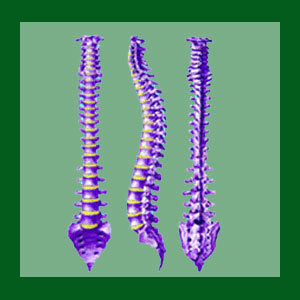
Inversion for spondylolisthesis is a home care treatment that uses gravity to decompress the spine and potentially reduce pain. However, inversion is not indicated for people with spondylolisthesis and can be extremely dangerous when the degree of vertebral migration is severe.
It shocks us that some companies routinely list spondylolisthesis as a condition that can be “successfully treated” (direct quote from their marketing materials!) using inversion tables and boot systems. It just goes to prove that as far as we have come as a society, consumer protections do not extend nearly far enough, as the many people who have been injured by inversion can attest to.
This patient guide explores the use of inversion as a specific treatment in people with spondylolisthesis. This guide focuses on patients who have pain that has been attributed to listhesis, but we will also mention its application in minor cases of spondylolisthesis that are asymptomatic.
What is Inversion for Spondylolisthesis?
Inversion is an ancient type of health treatment that suspends the person to some degree upside down. Inversion does not have to be drastic, such as 180 degrees. In fact, many people simply invert a slight amount in order to reduce the effects of gravity on the body and decompress the intervertebral spaces and spinal joints.
As you must already know, spondylolisthesis entails a migration of one or more vertebral bones out of their normal alignment in the spine. The bone(s) can move forward in a condition known as anterolisthesis or backwards, known as retrolisthesis. The degree of slippage is rated on a grading scale ranging from 1 or 4, with the higher numbers being more clinically significant.
Most inversion equipment is marketed as fitness apparatus and not health treatments. Therefore, the manufactures have more freedom how they can market the products and many make some very bold claims as far as benefits, including the ability to reduce pain and even cure many spinal problems. We have seen several ads on Google specifically mentioning spondylolisthesis as a condition that can be “successfully treated” using a specific home inversion table system. We can tell you here and now that no inversion system will cure vertebral migration and in fact, the potential for dire injury exists.
Inversion for Back Pain
Inversion claims to decompress the spine to some degree and there is evidence that this is a fact. However, where the spine is decompressed is not selectable and other effects which might occur are unavoidable. It is certainly possible that some degree of decompression might occur at the spite of spondylolisthesis and might even provide some benefit towards symptomatic reduction. However, this is a bit of a long shot and whatever positive effects are provided will end immediately after returning to a normal upright position.
There is also a very good chance that no benefit will be provided, since listhesis tends to be symptomatic for highly specific reasons that will not typically respond to inversion decompression, such as misalignments in the spinal canal and spinal joints.
Manufactures claim that the more dramatically the person inverts, the greater the benefits may be. Therefore, it seems that they are encouraging people with a compromised spine to invert 180 degrees and hang there hoping for good results. People who use the apparatus to invert just slightly are not likely to suffer injury or negative consequences, but they are extremely unlikely to see any pain relief benefit from listhesis either. Therefore, what is the point?
Inversion for Spondylolisthesis Guidance
Minor listhesis may not contraindicate a person from inverting for purely health reasons, although we would definitely not recommend it. Why take the chance to make the condition worse? However, we strongly discourage patients from using inversion specifically as a pain management system for case of moderate to severe listhesis. There is the possibly for grievous injury that might result in paralysis or even death. Do you really want to be hanging upside down if your compromised spine suddenly compress your spinal cord or cauda equina and paralyses you? It certainly seems like a very bad idea to us…
If you have mild, asymptomatic listhesis and want to try inversion for fitness applications, make sure to consult with your doctor or physical therapist first. However, if you are one of the millions of desperate people who have pain and a truly significant degree of vertebral migration and want to try inversion as a last resort before surgery, we would do everything in our power to discourage you. We have heard some real horror stories and know that most of the companies making and marketing these devices are highly suspect in their ethics, science and humanity. All they care about is money and they DO NOT care if their product hurts or kills you, like it has others. Don’t believe the lies and protect yourself by sticking to legitimate treatments for vertebral listhesis. You will be best served following this advice…
Spondylolisthesis > Spondylolisthesis Treatment > Inversion for Spondylolisthesis



